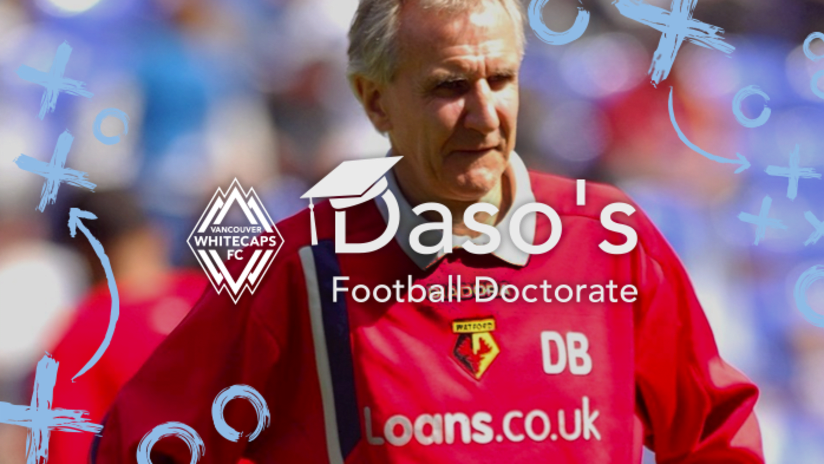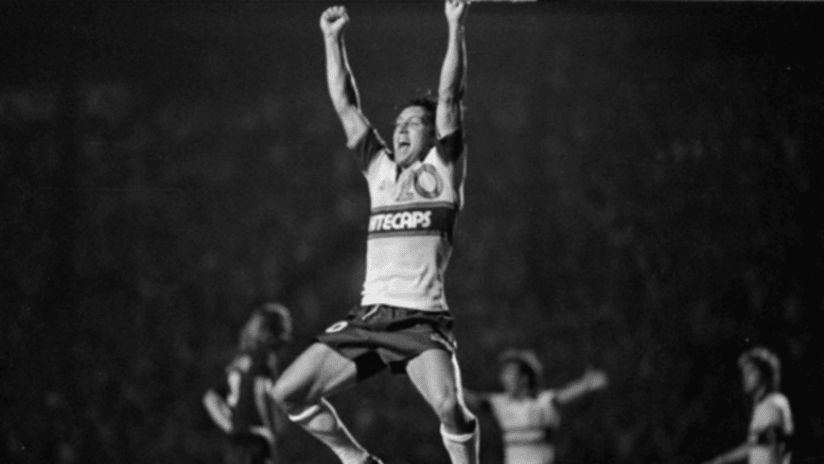Nick Dasovic, head coach of the Whitecaps FC Development Squad, spent nearly two full years earning his UEFA Pro License, the highest coaching license in world football. Many don’t know the work, dedication, and degree of education that goes into this course. In this blog, Daso will tell us about people he met along the way as he went through his program with the Scottish Football Association, and the lessons he learned from each person.
Today, Daso discusses the late Dick Bate, a longtime English manager and former Canada Soccer technical director.
PROFESSIONAL HIGHLIGHTS
- Elite coaching manager of the English Football Association
- Over 40 years of playing, coaching and coaching education
I had the opportunity to work alongside Dick when he was the technical director of the Canadian Soccer Association and know firsthand his knowledge of the game and his passion to teach and educate others. His relentless need to keep learning was evident as he was never seen without a pen and paper, always writing notes. The biggest piece of advice that he gave me was something that I use in my everyday life, which is “Do not take things personally!”
MIDFIELD PLAY
The most notable change in modern football is that all 11 players need to have the technical ability to play with the ball. With the importance of possession and building up from the back, midfielders have become influential in both the attacking and defensive roles. There is far greater interchanging and freedom within a system which has allowed more variety and is more difficult to defend. Many teams have opted to play with a lone striker and a withdrawn striker in behind him. Due to the nature of the systems, the counter attack style of football is more evident today than ever before. This is due to the fact that many teams start their defending line later.
WHY PLAY THROUGH THE MIDFIELD?
Dick describes the midfield as the ever changing elastic areas between the back and front line. Barcelona and Arsenal play using this methodology. Teams today attempt to play the possession and short passing game. In previous years, our Canadian national soccer teams have attempted to play a possession orientated game which has caused us issues when we meet the likes of Mexico, Brazil and Argentina. We do not have players with the same ability as the Mexicans or Brazilians so we tend to play more direct in order to play in the other team’s half and apply pressure higher up on the pitch. Your system will be dictated by the types of players that you have available.
CHARACTERISTICS OF MIDFIELD PLAYERS
Some of the characteristics of a midfielder include intelligence, power and determination. Midfielders are commonly known as the “generals”ーthey are the leaders of the team. They have the ability to keep the team in possession and dictate the rhythm of the match. There are mainly two types of midfield players, the ball winners and the playmakers. Most teams play with only one striker therefore it is vital that one of the midfielders joins the attack while the other one sits back and covers him defensively. The sitting midfield role, also known as the defensive midfielder, is a key role and requires diligence and humility.
MIDFIELD THINKING
Dick spoke about formations and tactical setups. He used Barcelona as an example how they play with two systems, the 1-4-3-3 and the 1-3-4-3. The 1-4-3-3 system is flexible and allows many changes during the match. In this system, there are three different types of diamond shapes that are prevalent, the central diamond, the midfield diamond and the attacking diamond. The key factor for me is the balance of the team. You need to be aware of the numbers you send forward as you do not want to leave yourself vulnerable to the counter attack. In the modern game the systems are dying, it’s about the movement of the whole team.
ATHLETIC REQUIREMENTS
The average time of the ball in play has gone from 55 minutes in 1990 to 68 minutes in 2008. This stat alone has put an emphasis on the athletic requirements of the modern day footballer. It’s not only the number of sprints that has increased but the intensity and duration. Players today are stronger and have more information about the benefits of diet, nutrition and rest.
POSSESSION CHANGES
Greater space and long passing have been replaced by short and quick passing in tighter areas. The value in possessing the ball is evident as is shown with statistics of percentage of possession. Teams that possessed the ball for more than 60 per cent of the game went on to win 52 per cent of the time and only lost 25 per cent. Teams that possessed the ball over 70 per cent won 67 per cent of the time. There seems to be a direct correlation between possession and winning.
SUMMARY
Dick Bate was one of the leading clinicians worldwide. The amount of thought that went into his presentations was incredible. I worked alongside Dick with the Canadian FA and his philosophy of wanting his teams to play a possession orientated game regardless of the outcome was refreshing. The main thing that I gained from Dick was the manner in which way he speaks to his players on and off the pitch, a true gentleman with class.
This blog was edited for brevity by Maxim Fossey.




